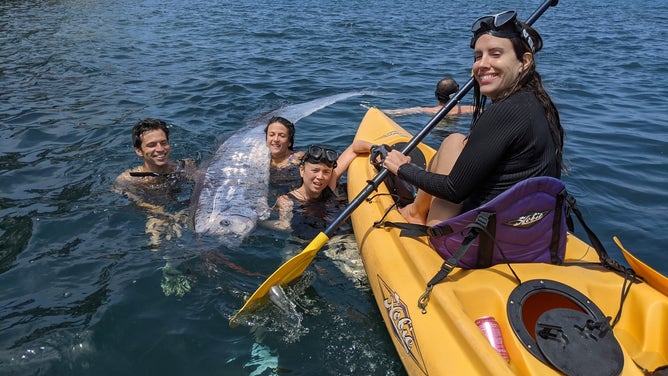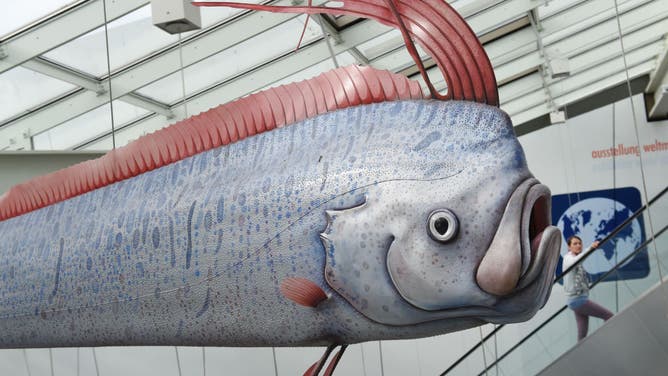‘Doomsday fish’ found dead off the coast of Southern California
According to NOAA, the fish are typically found in deep, ocean waters, where they are rarely seen by humans. The species is even in the Guinness Book of World Records for being the longest, bony fish.
'Doomsday fish' found dead off the coast of Southern California
A group of kayakers and snorkelers off of La Jolla, California encountered the rare deep-sea fish. According to the Scripps Institution of Oceanography, there have only been 20 sightings of the oarfish on California shores since 1901.
LA JOLLA, Calif. - A group of kayakers and snorkelers in Southern California encountered a rare deep-sea fish, which is drawing attention from marine scientists and conservationists.
The discovery of the oarfish was made Saturday in an area known as La Jolla Cove, just north of San Diego.
According to NOAA, oarfish are typically found in deep ocean waters, where they are rarely seen by humans.
Because they live at such depths, the species is known as filter feeders, primarily feeding on plankton and crustaceans found several hundred feet below the ocean surface.
FLORIDA BOATER SEVERELY INJURED DURING SHARK ATTACK

A group kayakers and snorkelers off of La Jolla, California encountered the rare deep-sea fish. According to the Scripps Institution of Oceanography, there have only been 20 sightings of the oarfish on California shores since 1901.
(Michael Wang/Owyn Snodgrass/ / FOX Weather)
The Scripps Institution of Oceanography reports that there have been only around 20 sightings of oarfish along California’s coastline since 1901.
The species is known for its long, slender body, which can reach lengths of up to 36 feet, about the size of a school bus.
The most recent sighting in California involved a specimen measuring approximately 12 feet long.
The oarfish is now in the custody of researchers who are studying it to learn more about the species.
"With help from NOAA Fisheries Service and California Sea Grant team members, the group was able to coordinate with lifeguards to transport the fish to the NOAA facility. Scientists from NOAA Southwest Fisheries Science Center and Scripps Oceanography will perform a necropsy to see if they can determine a cause of death. After the necropsy, the specimen will find a home in the Scripps Marine Vertebrate Collection — one of the largest collections of deep-sea fish in the world — where scientists will be able to further study this mysterious species," experts at Scripps stated.
YORKIE SURVIVES NEAR-FATAL SHARK ATTACK ALONG FLORIDA COAST
According to the Ocean Conservancy, the oarfish is commonly referred to as the "doomsday fish" because it is often sighted during times of disaster.
The fish has been observed around Japan during major earthquakes, but scientists report that they have yet to establish a link between its appearances and events such as quakes and subsequent tsunamis.
Once the examination of the fish by biologists is complete, it will likely join Scripps’ Marine Vertebrate Collection, which is the largest in the world.
If you come across a similar rare find in the ocean, Scripps would like to hear from you by emailing scrippsnews@ucsd.edu or calling (858) 534-3624.

09 July 2018, Germany, Stralsund: The replica of an oarfish hangs in the exhibition of the Oceanarium at the port. The Oceanarium is the top of the line of the Mecklenburg-Western Pomeranian museum landscape. Since its opening ten years ago 6,2 million people visited the Oceanarium. Now, the fusion with the Oceanographic Museum is planned.
(Photo by Stefan Sauer/picture alliance via Getty Images / Getty Images)
